普通的二叉堆是一颗完全二叉树,可以支持$O(1)$的查询当前堆内min/max,$O(log n)$的插入和删除节点。他支不支持合并呢?
我们可以首先改变一下堆的写法,把他用一种类似BST(二叉搜索树)的写法写出来,就可以有一种合并的方法!
先用文字描述一下:假设我们要将x和y这两个小根堆合并,我们判断一下如果x的堆顶大于y的堆顶,就交换一下x和y,然后继续合并x的某个子孩子和y。
没看懂上面那一段文字也没关系,我们上图:(图取自教练上课时的课件,应该没关系吧QAQ)
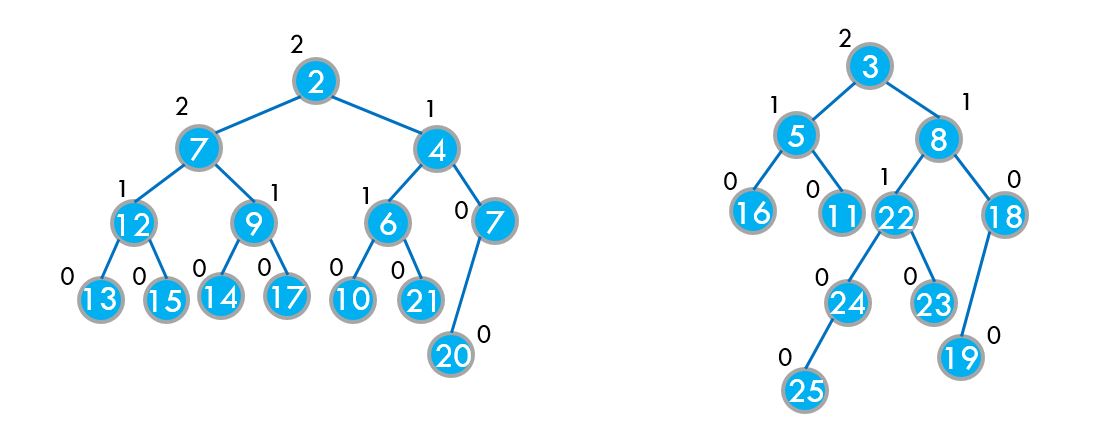
假设我们要合并这两棵树
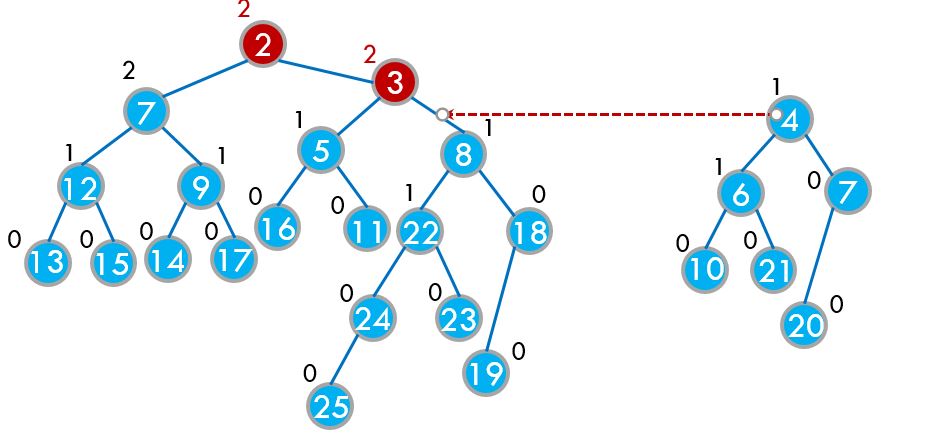
继续往下合并
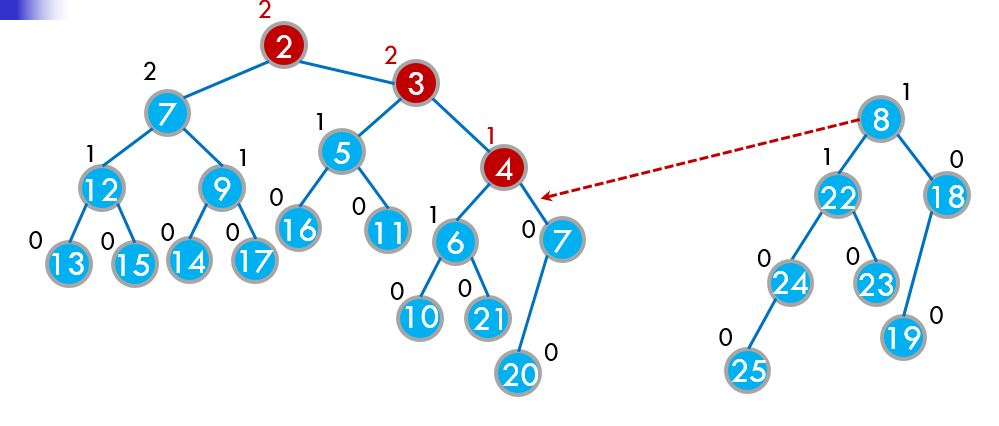
这次合并我们发现x的堆顶大于y的堆顶了,就交换了x和y,然后继续往下合并
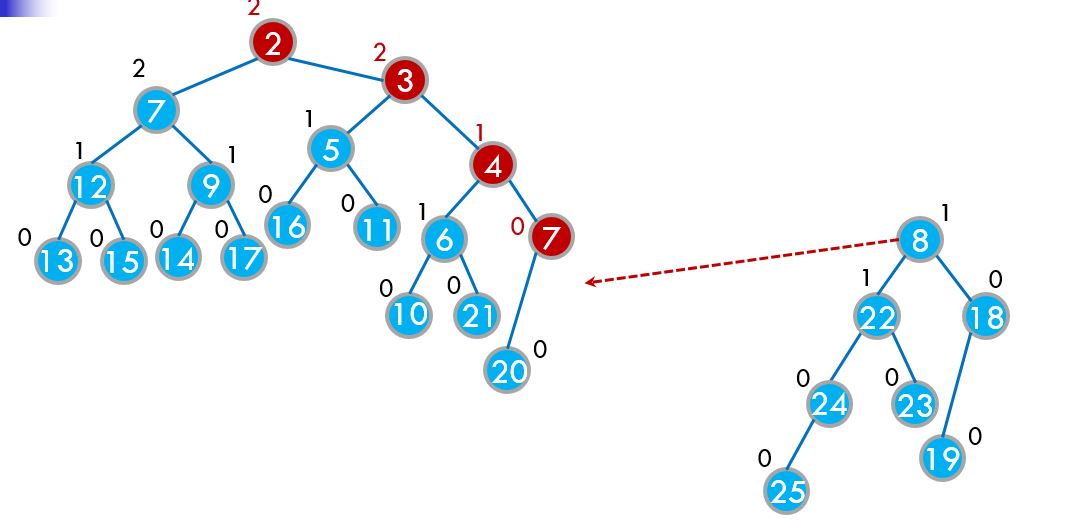
最后我们发现7没有右儿子,就直接让7的右儿子变成y就行了!!
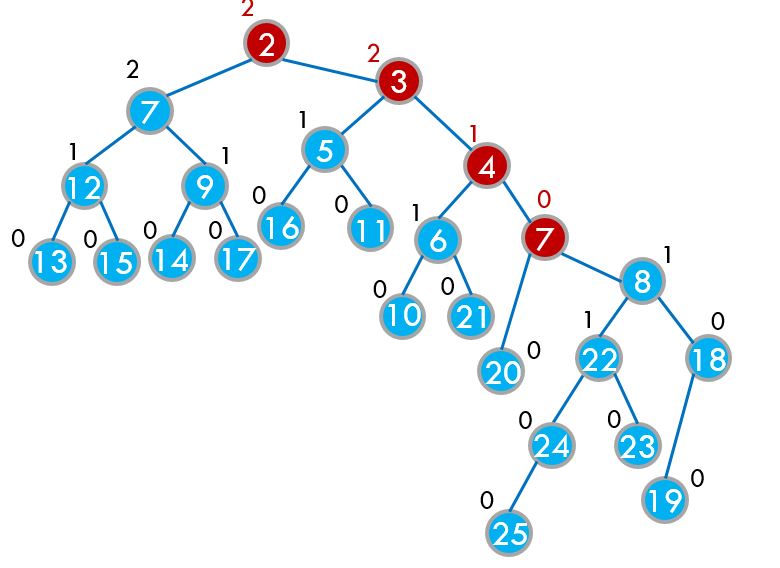
到此,合并正式完成!
但是我们发现这样合并完之后,堆并不再是一颗完全二叉树了,那怎么办呢?
这里就我们可以用一种贪心的思想。其实就是我之前说的继续合并x的某个儿子与y。究竟是哪个儿子呢?
我们这里定义一个值,叫做”根值”,一个节点的根值就是它到最近的叶子节点的距离。其实之前那几张图上每个节点左上角的值就是这个点的根值。
那么我们每次合并就只要合并x的根值最小的儿子和y就行了。这就叫做启发式合并(貌似)。是不是跟并查集的按秩合并有点像啊!
关于他的复杂度,我们可以感性理解为O(两个堆的堆顶的根值),而用这种启发式合并的话,即使根值最坏也就是$logn$的(完全二叉树),所以合并一次的复杂度就是$O(log n)$的辣!
那么左偏树又是什么呢?其实就是保证它的右儿子的根值比作儿子小,然后每次合并就只用合并x的右儿子和y就行了!同时回溯的时候发现不满足左偏树性质时就交换左右儿子(感觉没什么用啊)
插入
就是合并一个堆和一个只有一个点的堆。
删除
直接合并它的左右儿子就行了
查询堆顶
直接返回堆顶就行了
关于启发式合并那一块是学了左偏树之后自己YY的,不知道是否叫这个啊?还是有什么别的名字?各位dalao轻喷啊QAQ
下面贴代码吧!指针党福利!(有想看指针版treap的可以去我的题解里)
启发式合并:(通过Luogu P3377,用时405ms)
1 |
|
左偏树:(通过Luogu P3377, 用时363ms)
1 |
|
最后说几句,可并堆还有好几种,如配对堆,斐波那契堆等等,大家想学的可以去看一看!